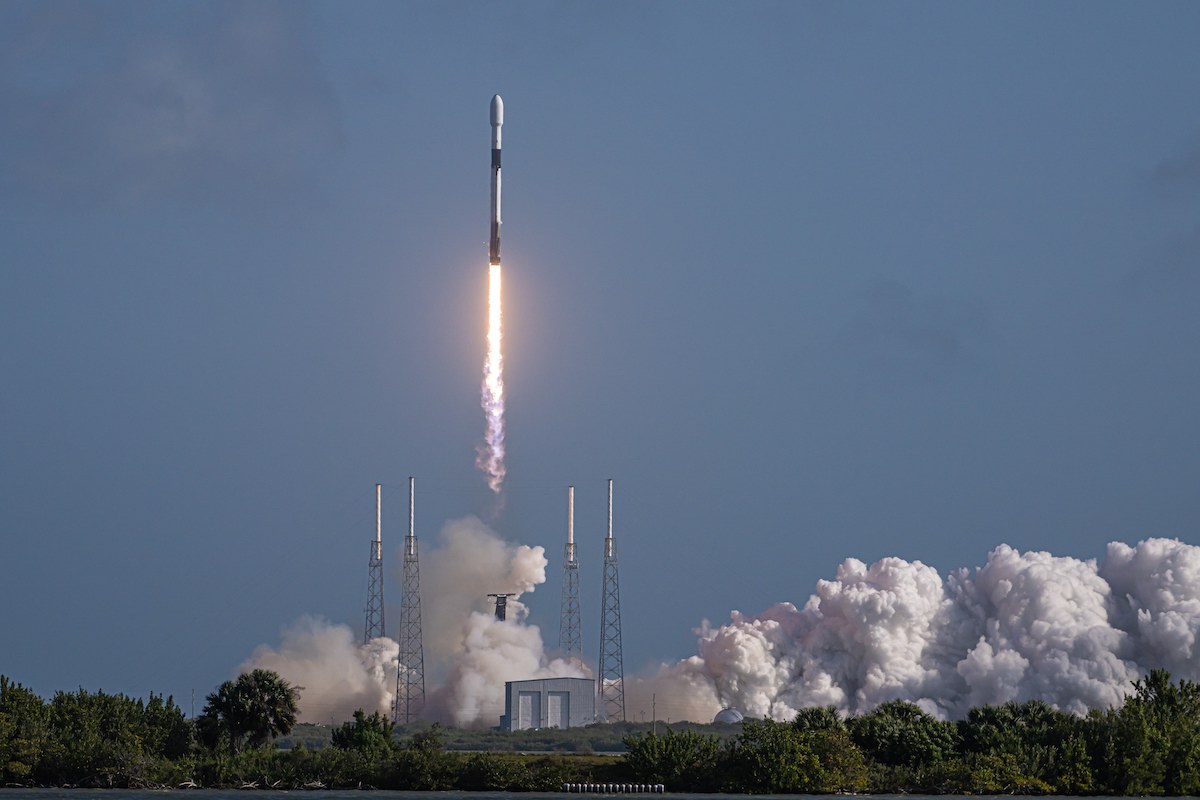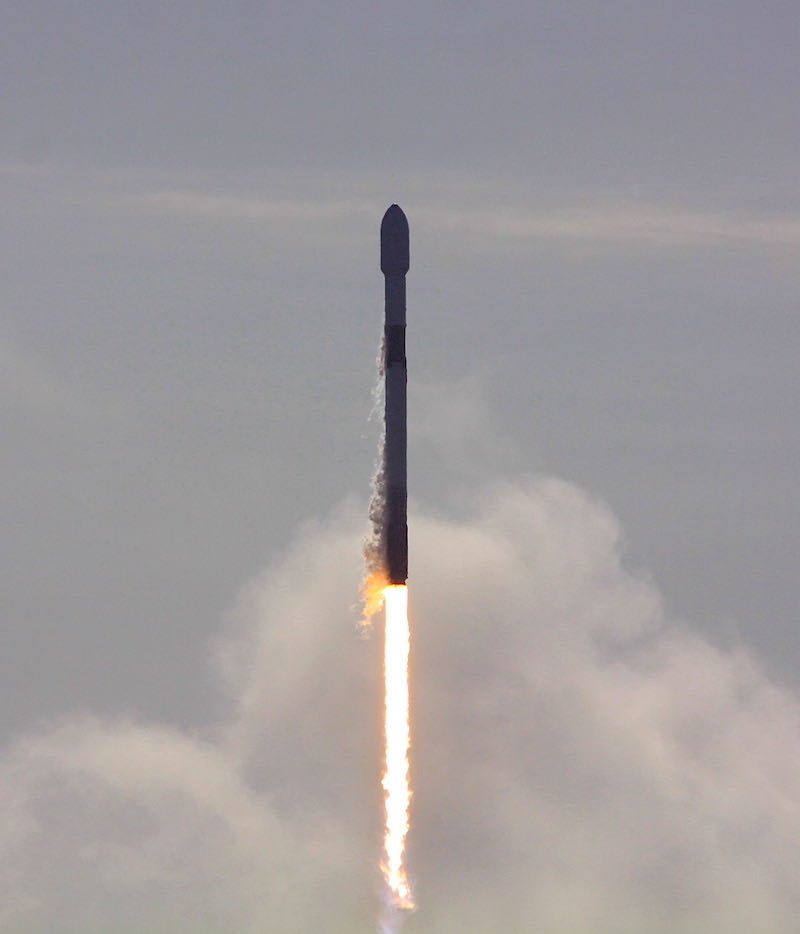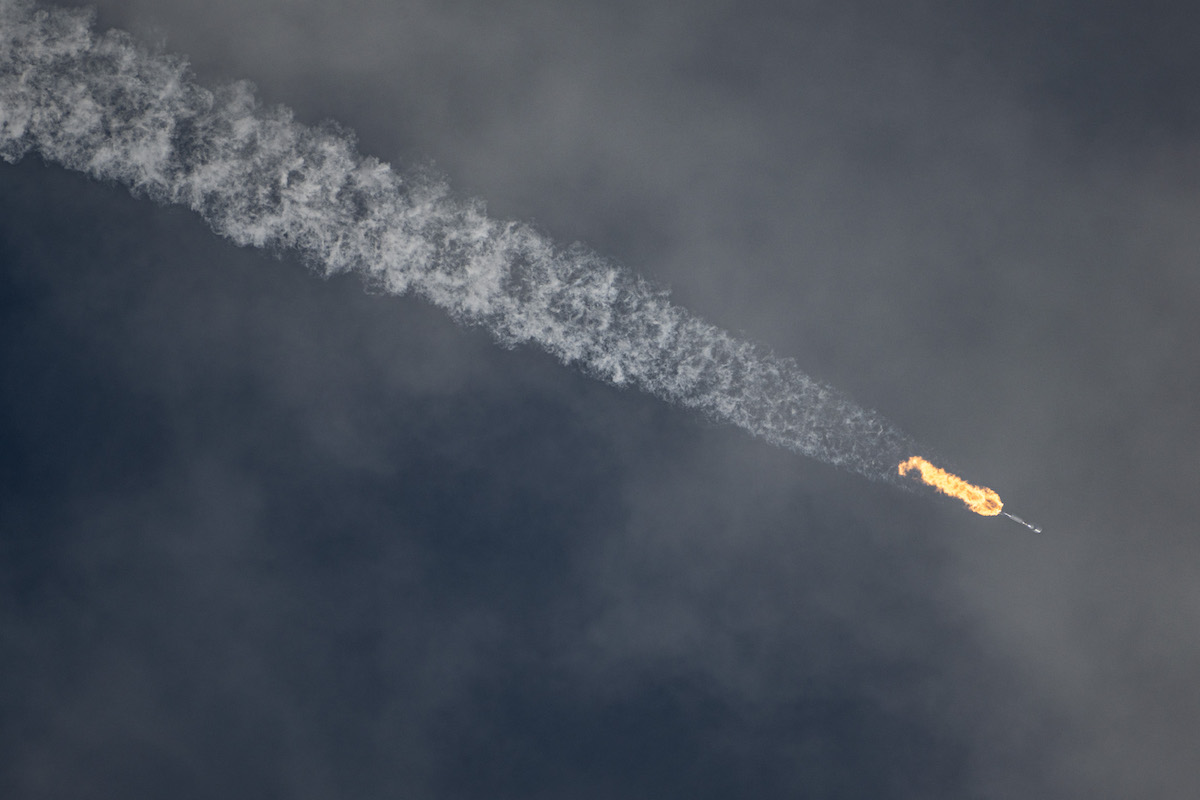Space News & Blog Articles
SpaceX “broomstick” launches 40th Starlink mission
 SpaceX’s Falcon 9 rocket lifts off from Cape Canaveral Space Force Station on March 9. Credit: Michael Cain / Spaceflight Now / Coldlife Photography
SpaceX’s Falcon 9 rocket lifts off from Cape Canaveral Space Force Station on March 9. Credit: Michael Cain / Spaceflight Now / Coldlife Photography
Another grouping of 48 Starlink internet satellites soared into orbit Wednesday from Cape Canaveral aboard a Falcon 9 rocket, or what SpaceX’s launch director jokingly called an “American broomstick” in a jab at Russian space chief Dmitry Rogozin.
With a burst of steam and rocket exhaust, the Falcon 9 fired its Merlin 1D engines and began a vertical climb away from Space Launch Complex 40 at Cape Canaveral Space Force Station at 8:45:10 a.m. EST (1345:10 GMT) Wednesday.
The booming blastoff began SpaceX’s second Starlink mission in six days, and the company’s 10th flight since Jan. 1, keeping pace with a planned launch cadence of one mission per week this year.
In the final minute of the countdown, SpaceX’s launch director, Julia Black, announced her final authorization for the mission.
“Time to let the American broomstick fly, and hear the sound of freedom,” Black said. “LD (Launch director) is go for launch.”
The remark referenced a comment from Rogozin, the head of Russia’s space agency, who last week announced Russia would no longer ship rocket engines to the United States.
“Let them fly on something else, their broomsticks, I don’t know what,” Rogozin said on Russian state television.
He blamed U.S. sanctions enacted following Russia’s invasion of Ukraine. Some U.S. rockets, like United Launch Alliance’s Atlas 5 and Northrop Grumman’s Antares, use Russian main engines on their first stage.
ULA says it has all the engines it needs to fly the remaining Atlas 5 missions before it retires that rocket. The future of Northrop Grumman’s Antares rocket is murkier.
Other rockets, like SpaceX’s Falcon 9, are powered by U.S.-built engines.
Rogozin, known for his inflammatory tweets, has also forced the cancellation of a commercial satellite launch for London-based OneWeb on a Russian Soyuz rocket. Russia’s space agency, acting on Rogozin’s orders, also withdrew Russian technicians and engineers from the European-run Guiana Space Center in South America, suspending Soyuz launch operations there.
The director of Russia’s space agency has also threatened the future of the International Space Station, although operations on the orbiting lab — with four Americans, two Russians, and one German astronaut — have continued amid the Russian attack on Ukraine.
Incendiary tweets are nothing new for Rogozin. He served as Russia’s deputy prime minister before taking over the Russian space agency. Following Russia’s annexation of Crimea in 2014, he tweeted: “After analyzing the sanctions against our space industry, I suggest the U.S. delivers its astronauts to the ISS with a trampoline.”
Rogozin was referring to NASA’s use of Russian Soyuz spacecraft to ferry U.S. and allied astronauts to and from the International Space Station. During a gap on U.S. human spaceflight capability following the retirement of the space shuttle, NASA purchased seats on Soyuz crew capsules to transport astronauts until SpaceX’s Crew Dragon spaceship began launching crews to the station in 2020.
“The trampoline is working!” Elon Musk, SpaceX’s founder and CEO, joked after the Crew Dragon launch in 2020.
 Nine Merlin engines power the Falcon 9 rocket into the sky over Cape Canaveral. Credit: Stephen Clark / Spaceflight Now
Nine Merlin engines power the Falcon 9 rocket into the sky over Cape Canaveral. Credit: Stephen Clark / Spaceflight Now
Wednesday’s mission, designated Starlink 4-10, mimicked SpaceX’s recent Starlink launches from Florida’s Space Coast. The Falcon 9 rocket, powered by nine Merlin 1D engines, steered southeast from Cape Canaveral Space Force Station.
Arcing over the Atlantic Ocean, the rocket’s first stage booster turned off its main engines and separated from the Falcon 9’s upper stage at T+plus 2 minutes, 34 seconds. While the second stage powered into orbit with the 48 Starlink satellites, the first stage came back to Earth for a landing on SpaceX’s drone ship “A Shortfall of Gravitas” parked in the Atlantic northeast of the Bahamas.
The reusable booster notched its fourth launch into space. The rocket, tail number B1052, flew its first two missions as a side booster on SpaceX’s Falcon Heavy rocket. After a conversion effort, SpaceX flew the booster again as the first stage of a Falcon 9 rocket Jan. 31 with an Italian radar remote sensing satellite.
With the rocket’s fourth mission in the books, the vessel will return the booster to Port Canaveral for offloading and refurbishment before another mission.
The second stage shut down nearly nine minutes into the mission after reaching a parking orbit. Following a 48-minute coast halfway around the world, the Falcon 9 relit its second stage engine for a one-second burn to place the Starlink satellites into the proper orbit for deployment.
The Falcon 9 released the flat-packed satellites, each weighing about a quarter-ton, nearly 66 minutes after launch. The rocket’s guidance computer targeted an orbit ranging between 189 miles and 197 miles (305-by-317 kilometers) in altitude, with an inclination of 53.2 degrees to the equator.
SpaceX confirmed the successful deployment of the 48 satellites after the rocket passed in range of a ground tracking station in Alaska. The separation occurred while the rocket was a communications blackout.
The Starlink satellites will extend solar arrays and use on-board ion thrusters to reach their operational orbit at an altitude of 335 miles (540 kilometers), where they will enter commercial service for SpaceX.
The fresh satellites deployed Wednesday brought the total number of Starlink spacecraft launched by SpaceX to 2,282. But some of those have failed or have been decommissioned. SpaceX surpassed 2,000 operating Starlink satellites with Wednesday’s mission.
That’s more than quadruple the number of satellites currently flying in the second-largest fleet of spacecraft — the internet constellation owned by Starlink rival OneWeb. In third place is Planet, which operates a fleet of more than 200 small Earth-imaging satellites.
The launch Wednesday was the 40th Falcon 9 flight to carry Starlink satellites as a primary payload.
SpaceX is in the midst of launching around 4,400 Starlink satellites into five orbital “shells” more than 300 miles above Earth. The shells are positioned at different inclinations, and SpaceX completed launches of the first of the five Starlink groups last May.
Ultimately, SpaceX intends to launch as many as 42,000 internet satellites. The final figure hinges on market demand for the Starlink service, which offers high-speed, low-latency connectivity.
SpaceX says the service is best suited for customers in remote, hard-to-reach areas, such as rural communities, isolated homes, islands, and ships. SpaceX has also partnered with the U.S. military to demonstrate Starlink connectivity to airplanes.
 Falcon 9 heads downrange. Credit: Michael Cain / Spaceflight Now / Coldlife Photography
Falcon 9 heads downrange. Credit: Michael Cain / Spaceflight Now / Coldlife Photography
Users in Ukraine are also relying on the Starlink network to provide independent access to the internet during Russia’s military invasion of the country. SpaceX turned on service to Ukraine in late February, and shipped a batch of Starlink user terminals to Ukraine days after the invasion started, responding to a request from Ukraine’s vice prime minister.
Elon Musk, SpaceX’s founder and CEO, tweeted March 4 that SpaceX is reprioritizing efforts to emphasize cyber defense and “overcoming signal jamming.”
“Some Starlink terminals near conflict areas were being jammed for several hours at a time,” Musk tweeted. “Our latest software update bypasses the jamming.”
Without elaborating, he said the reprioritization “will cause slight delays” in SpaceX’s Starship heavy-lift rocket program, a fully reusable launch vehicle in development ferry massive cargo and humans into deep space. The effort will also cause slight delays in Starlink V2, the next generation of Starlink satellites designed to launch on Starship.
But the Falcon 9 launch schedule continues unchanged. Another Starlink mission is scheduled to launch from Cape Canaveral no earlier than March 18.
This email address is being protected from spambots. You need JavaScript enabled to view it. the author.
Follow Stephen Clark on Twitter: @StephenClark1.
When you subscribe to the SpaceZE News Feed, we will send you an e-mail when there are new updates on the site so you wouldn't miss them.

